Memorial Poles (RBCM 15558 a, b)

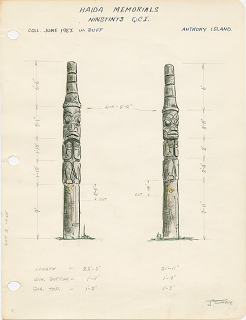
John Smyly’s drawing of the two memorial poles from SGang Gwaay Llnagaay.
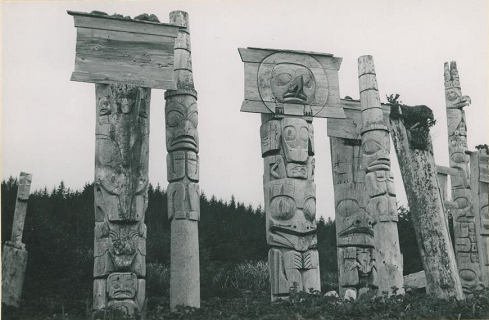
The memorial poles can be seen on either side of the mortuary pole in the centre of this photograph of SGang Gwaay Llnagaay taken by Charles F. Newcombe in 1901. PN 836.
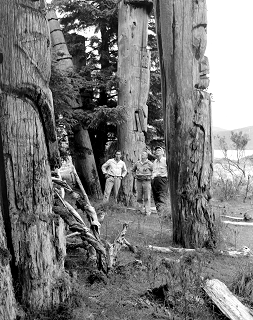
Members of the Totem Pole Preservation Committee in 1957 included RBCM curator Wilson Duff (left) and Haida artist Bill Reid (right). One of the memorial poles is visible in the background. I-28960.
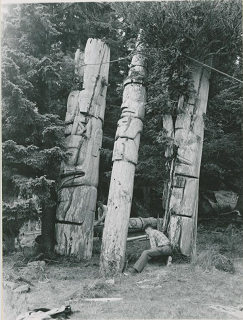
Preparing to remove one of the memorial poles. Bernard Atkins photograph, 1957. PN 7465.
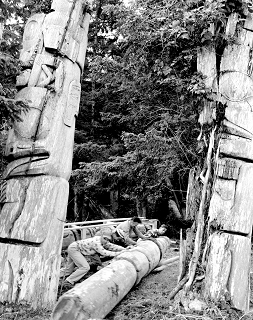
The pole section on the ground, 1957. A crated pole section can be seen in the background. I-28962.
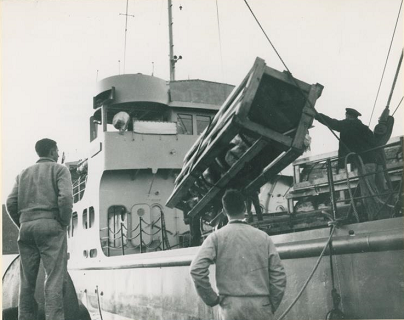
Curator Wilson Duff (left) watches one of the crated pole sections being loaded onto the Canadian Navy vessel Laymore in 1957. PN 7422.
These two memorial poles stood in front of a house in SGang Gwaay Llnagaay (Red Cod Island Town, also known as Ninstints) on Anthony Island at the southern tip of Haida Gwaii, which is now a World Heritage Site. Records indicate they belonged to Kanskinee, a chief of the Sand Town People lineage of the Raven division of the Haida at Kaidju Llnagaay (Songs of Victory Town), who brought his poles with him when he moved to SGang Gwaay Llnagaay some time before the last decade of the 19th century. (The much-reduced population of SGang Gwaay had moved to other villages by about 1885–1890.) To raise the poles at SGang Gwaay their bases were placed in a five-foot-deep hole and stabilized with huge boulders and earth. Another pole from SGang Gwaay Llnagaay in the Royal BC Museum (15559) may also have been brought by Kanskinai from his original home at Kaidju.
The poles were among those removed from SGang Gwaay Llnagaay to the museums in Victoria and Vancouver in 1957. Only the top sections were taken; the uncarved bottom sections were left at the site. The Totem Pole Preservation Committee’s salvage operations were considered acceptable at the time, and they thought they had permission from the Haida to remove the poles. This is controversial now. It is now understood that poles should be left where they were raised, to eventually return to the earth. But if requested to do so by First Nations, museums can help stabilize and preserve remaining poles in situ. For several years beginning in 1978, conservators from the Royal BC Museum visited SGang Gwaay to make condition reports and undertake preventative conservation of the remaining poles and structures. Many of the poles removed to museums from Haida Gwaii and elsewhere have been, or will be, repatriated to the Indigenous communities from which they came.
Do you have a story to share about this item? Add your voice to the community.